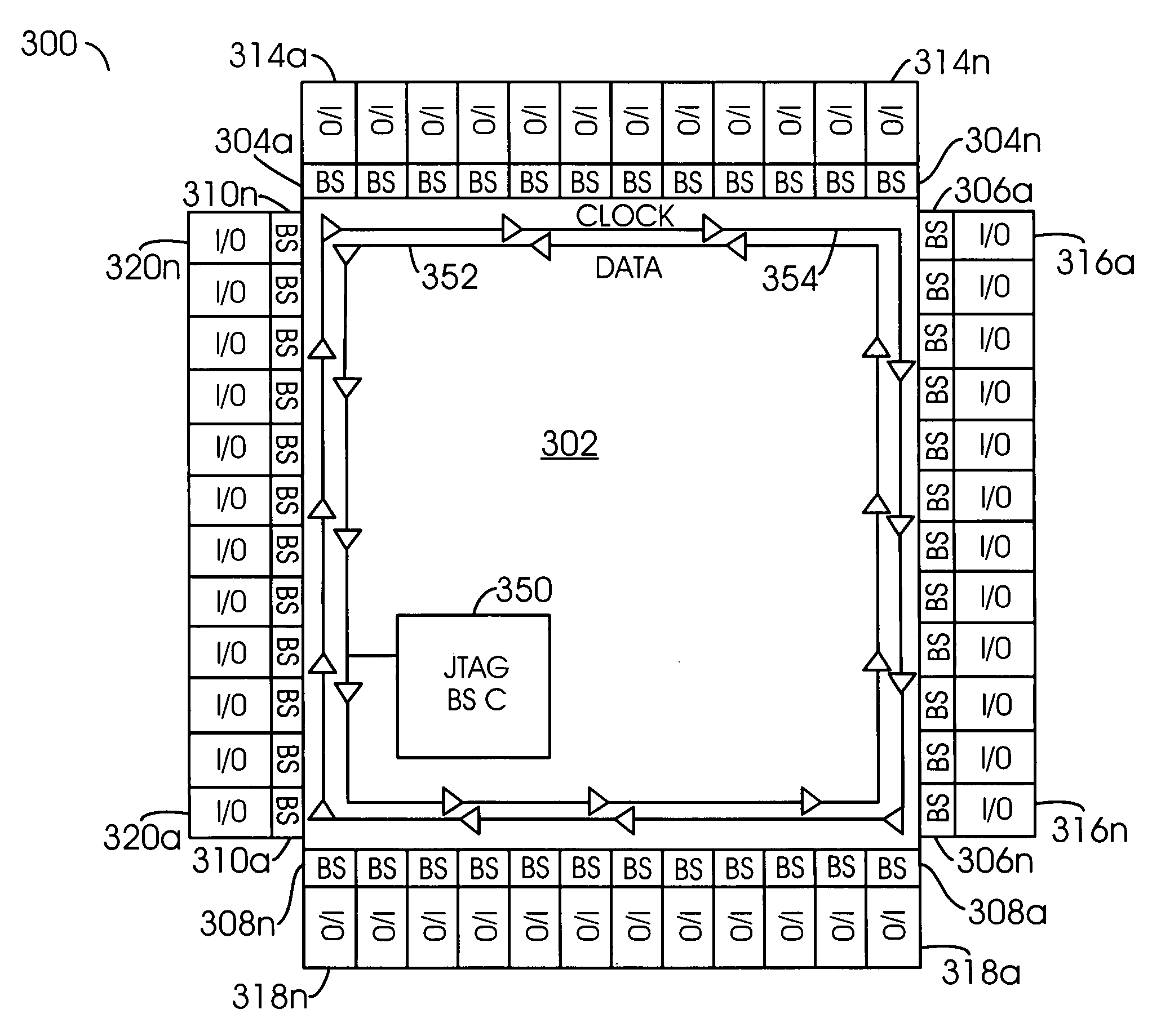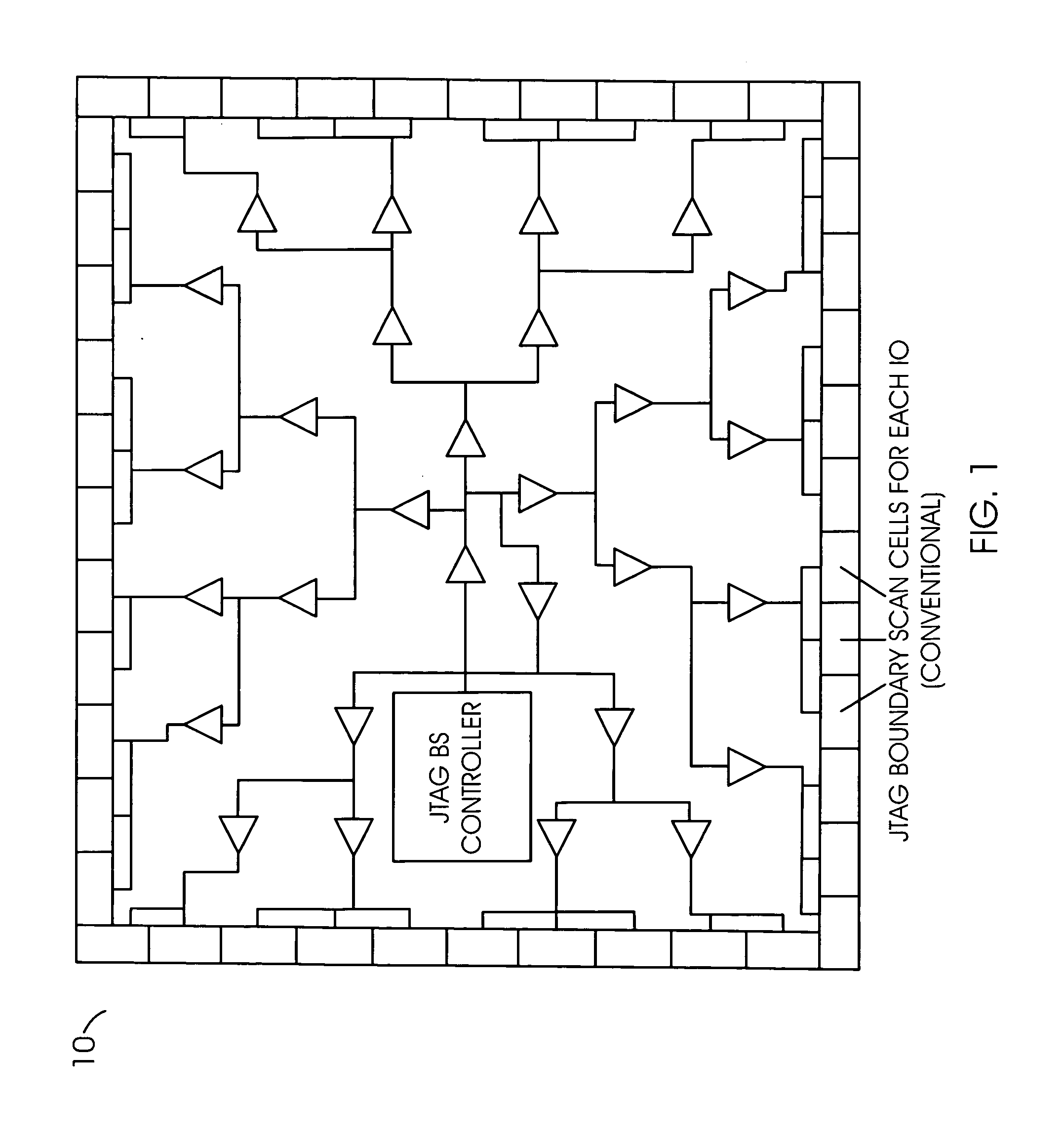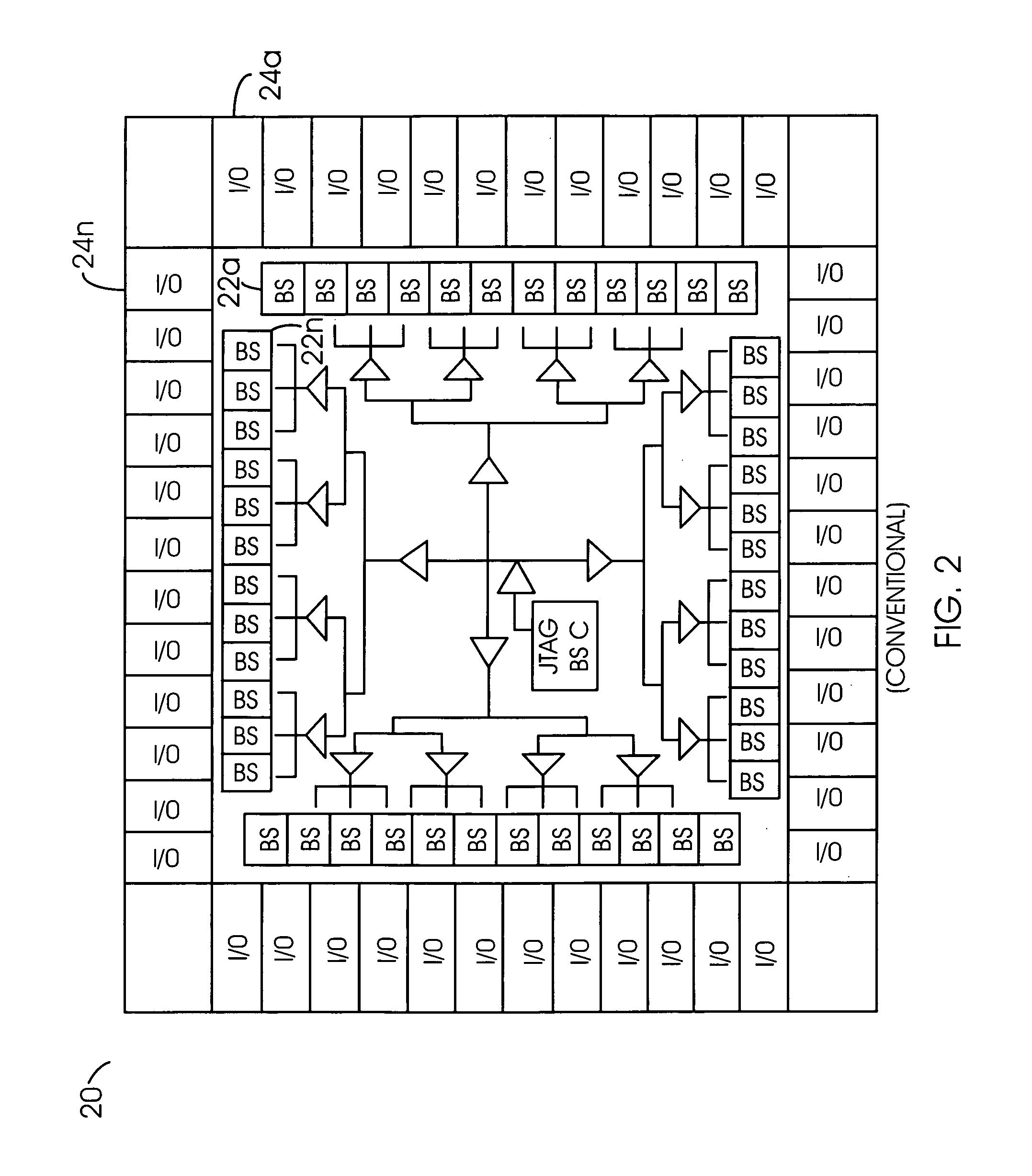Optimized buffering for JTAG boundary scan nets
a technology of buffering, which is applied in the direction of individual semiconductor device testing, semiconductor/solid-state device testing/measurement, instruments, etc., can solve the problems of increasing congestion, chain failure, and current netlists which go into layout do not contain sufficient buffering of high fanout jtag boundary scan control nets
- Summary
- Abstract
- Description
- Claims
- Application Information
AI Technical Summary
Benefits of technology
Problems solved by technology
Method used
Image
Examples
Embodiment Construction
[0018]Referring to FIG. 3, a block diagram of a system (or circuit) 100 is shown in accordance with a preferred embodiment of the present invention. The circuit 100 may be configured to improve the overall routing of JTAG boundary scan control nets in an ASIC design. The circuit 100 may be configured to reduce the area which is needed for the net routing and to provide control of where wires will be located on the die after final layout is completed. The system 100 may be configured to optimize buffering for JTAG boundary scan nets. An example of a JTAG boundary scan net may be found in the IEEE Standard Test Access Port and Boundary-Scan Architecture, published Feb. 15, 1990 and revised on Jun. 17, 1993, which is hereby incorporated by reference in its entirety.
[0019]The system 100 generally comprises a JTAG boundary scan controller 102, a number of buffers 104a–104n, a number of buffers 106a–106n, a number of cells 108a–108n, a number of cells 110a–110n, a number of cells 112a–112...
PUM
 Login to view more
Login to view more Abstract
Description
Claims
Application Information
 Login to view more
Login to view more - R&D Engineer
- R&D Manager
- IP Professional
- Industry Leading Data Capabilities
- Powerful AI technology
- Patent DNA Extraction
Browse by: Latest US Patents, China's latest patents, Technical Efficacy Thesaurus, Application Domain, Technology Topic.
© 2024 PatSnap. All rights reserved.Legal|Privacy policy|Modern Slavery Act Transparency Statement|Sitemap



